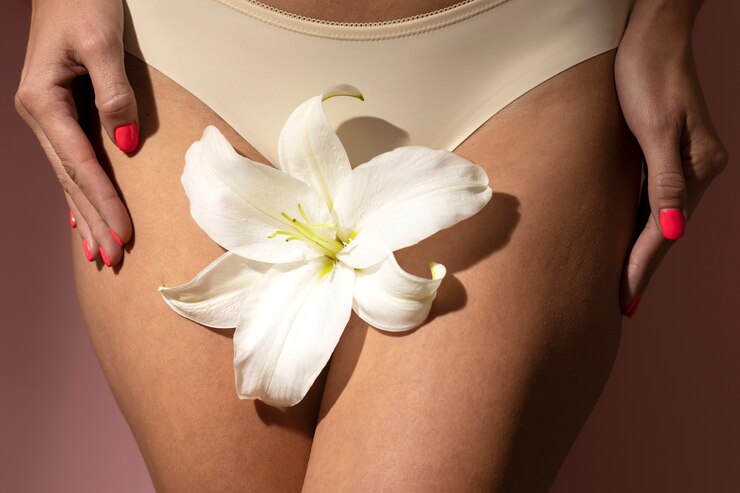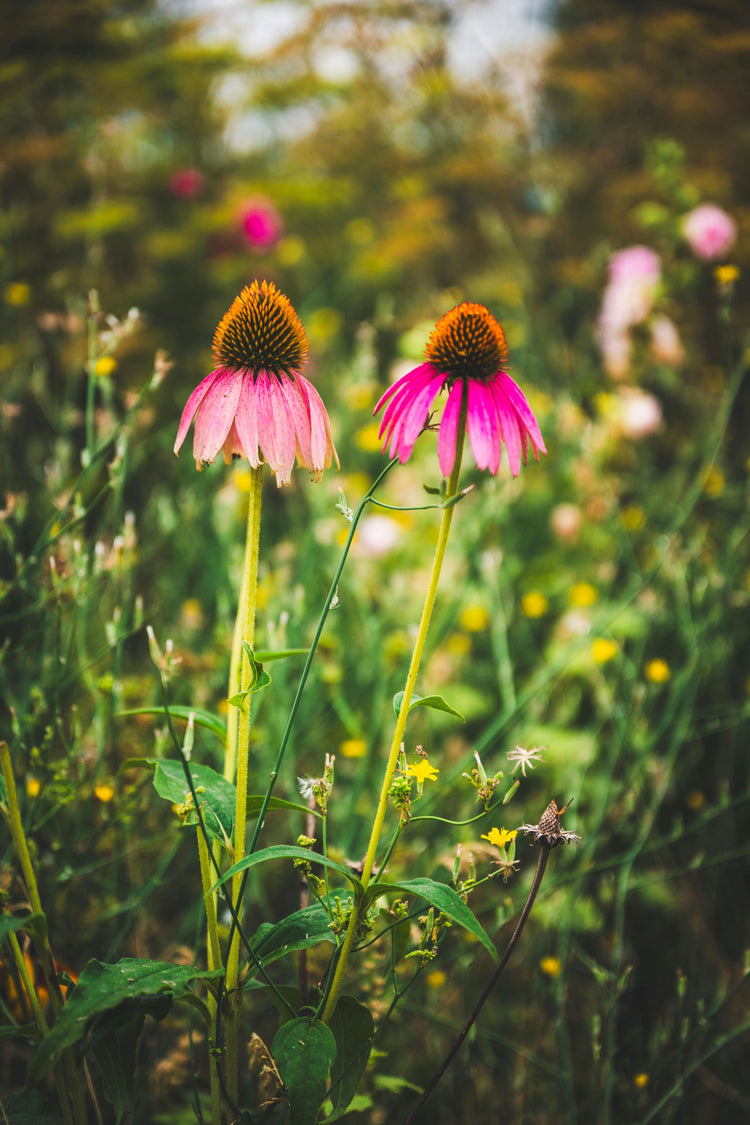Vaginal Boil: Symptoms, Causes, Treatment (Pictures)


Often considered an intimate and seldom-mentioned health concern among women is the occurrence of vaginal boils. Despite their rarity in medical conversation, every woman must understand this condition.
A vaginal boil refers to a pus-filled lump that forms due to bacterial infection within a hair follicle or oil gland near the female genitalia. It closely resembles pimples but tends to be more painful and larger.
An individual experiencing vaginal boils might notice red bumps around the vagina initially; these gradually enlarge over several days into tender, swollen nodules filled with white or yellowish pus at their center. Accompanying symptoms include:
Several elements contribute to the development of these uncomfortable lumps, which primarily stem from the bacteria Staphylococcus aureus, prevalent on human skin, invading underlying tissues via tiny cuts or friction caused by clothing against bare skin.
Recognizing early signs paves the way for accurate diagnosis followed by effective treatment plans, preventing complications such as abscess formation, which requires surgical intervention.
In diagnosing vaginal boils, healthcare professionals delve into detailed personal medical history along with visible examination, often sufficing in determining their presence without necessitating additional laboratory tests.
Primary treatment consists of using warm compresses to alleviate pain and encourage spontaneous drainage upon maturation. This aids the natural healing process, which is later aided through a prescribed antibiotic course that effectively combats underlying bacterial infections, thereby minimizing recurrence chances.
These methods ensure voids are kept clean and dry, including daily bathing, patting dry rather than rubbing hard after urination or shower, and avoiding wearing tight undergarments for extended periods.

A vaginal boil constitutes a localized infection in the vagina, creating pus-filled bumps on its surface. It is essentially an abscess, primarily caused by bacterial invasion into hair follicles or oil glands available near the female genitalia.
Originating as small red nodules, these boils typically intensify over some days, developing into hard and painful lumps with white or yellowish pus centers. Any woman might experience one at some point due to numerous reasons, ranging from personal hygiene issues to weakened immune systems.
The symptoms of a vaginal boil are initially recognized as small, red bumps around the vagina. Over several days, these minuscule bumps evolve into larger, rounded nodules that are tender to touch and contain white or yellowish pus at their center.
Signs accompanying this characteristic development include:
Discomfort during urination: The presence of boils surrounding the urethra results in an irritating sensation while passing urine.
Painful intercourse: Vaginal boils might cause inflammation making sexual activities uncomfortable or even painful.
Itching near affected areas: A common symptom is itching experienced around these inflamed lumps, signaling underlying bacterial infection.
Fever, if left untreated over time: Systemic effects such as fever manifest when infections reach advanced stages without receiving requisite medical treatment.
Understanding and recognizing these symptoms help initiate timely interventions, proving beneficial for prompt recovery from any discomfort.
The primary instigator of vaginal boils is the bacterium Staphylococcus aureus, commonly found on human skin or in nasal passages. Under normal circumstances, these bacteria do not result in any harm. However, when they invade deeper into the skin layers through a cut or abrasion, issues arise.
A vaginal boil manifests as an infection within hair follicles or sebaceous (oil) glands present near female genitalia leading to inflammation and painful pus-filled lumps.
Several factors predispose women towards developing this condition:

The diagnosis of vaginal boil initially involves a detailed medical history and physical examination by a healthcare professional. The starting point is identifying the characteristic symptoms such as swelling, redness, pain, or pus accumulation around the vagina.
Generally, visual inspection suffices to confirm the presence of these painful lumps in intimate areas. A doctor typically looks for signs like reddened skin lesions containing yellowish-white centers, indicating accumulations of known medical abscesses often associated with boils.
In some cases, when individuals experience recurrent infections or if the initial treatment course does not result in improvement, doctors resort to recommendations involving further investigations to determine the exact cause behind persistent problems.
One common investigative approach involves bacterial cultures obtained from swab samples taken directly from open sores. These cultures help identify offending organisms and, thereby, guide suitable antibiotic therapy selection based on the organism's susceptibility profile against various drugs available to fight infections.
Addressing vaginal boils encompasses a myriad of treatment modalities designed to alleviate discomfort and prevent recurrence.
Home remedies emerge as the first line of intervention in managing vaginal boils, offering relief from discomfort while promoting faster healing. They aim at reducing inflammation and encouraging the boil to drain naturally.
Warm Compresses: Applying a warm compress on the affected area several times daily provides immense relief by enhancing blood circulation and aids in pus drainage, thereby hastening recovery. It is advisable to use a clean cloth dipped in mildly hot water, ensuring safety precautions so as not to scald delicate genital tissues.
Over-the-Counter Pain Relievers: Non-prescription analgesics such as ibuprofen often help alleviate the pain associated with these lumps, making it more manageable, especially during acute episodes.
Topical Antibacterial Ointments: The application of over-the-counter antibacterial creams helps prevent secondary infections, which might further complicate existing ones if left untreated.
Epsom Salt Baths: Immersion into a bathtub filled with tepid water containing dissolved Epsom salts proves therapeutic since magnesium sulfate works wonders, softening skin around boils, facilitating spontaneous drainage when mature enough, providing a soothing effect, and alleviating any irritation or itching experienced previously.
Maintain Good Hygiene Practices: Ensuring cleanliness includes washing intimate areas gently using mild soap followed by patting dry, avoiding vigorous rubbing, and providing an inhospitable environment that thwarts bacterial growth and thus prevents recurrence.
While home treatments bring about significant improvement however, persistent severe symptoms necessitate prompt, professional medical attention, opting for prescribed medications and surgical interventions if required, resulting in effective management and successful resolution, ultimately safeguarding women's health at every step, repelling chances of complications arising in later stages due to negligence, ignorance early warning signs presented in initially.
While vaginal boils are usually harmless and self-limiting, if left untreated or improperly managed over time, they might give rise to some serious complications:
Thus identifying and understanding these linked complications associated unveils the importance of reasonable preventive measures combined with regular healthcare follow-ups successfully navigate from troubles presented by seemingly insignificant but potentially discomforting realities such as vaginal boils.
Though painful and inconvenient, spinal boils are often preventable with proper care. A few key strategies help minimize the risk:
Seeking medical counsel becomes crucial under certain circumstances related to vaginal boils. While mild cases might resolve on their own with home care, specific situations are demanding immediate doctor's attention:
Hence learning to discern important warning signs remains part of responsible self-care routines assuring continuous well-being unhampered with disturbing ailments like recurring vaginal boils, thereby making every woman her best advocate personal health journey.
Vaginal boils, primarily caused by Staphylococcus aureus bacteria, represent an inflammatory response around female genitalia. Their onset often links to poor hygiene practices, compromised immunity, or chronic conditions like diabetes and HIV/AIDS. While warm compresses and antibiotics are primary treatments, persistent symptoms or systemic features such as fever necessitate immediate medical consultation. Cultivating good intimate hygiene alongside regular health checkups remains fundamental in managing these distressing ailments effectively for overall reproductive well-being.
What is the best treatment for a boil?
A comprehensive treatment plan under the guidance of a healthcare provider often includes warm compresses coupled with prescribed antibiotics. The warmth aids in hastening boil maturation, encouraging automatic draining and relieving pain, while antibiotic intake effectively combats underlying bacterial infection.
How do you remove a boil?
Medical practitioners are responsible for removing or lancing boils to prevent complications such as scarring or secondary infections. This procedure involves incision and subsequent drainage under local anesthesia, ensuring minimal discomfort to patients.
Can a boil heal without treatment?
While some small uncomplicated boils drain out naturally, substantial ones seldom heal completely without professional intervention since untreated bacteria continue thriving, sustaining inflammation, and augmenting related symptoms rather than diminishing them.
How to cure boils fast naturally?
Several home remedies prove beneficial in aiding natural healing when dealing with simple exteriorly located lesions; these include applying turmeric, which has anti-inflammatory properties; honey, which is known as a natural antibacterial; and tea tree oil, which demonstrates significant antimicrobial effects, reducing both the size and redness associated with boils.










Plus get the inside scoop on our latest content and updates in our monthly newsletter.